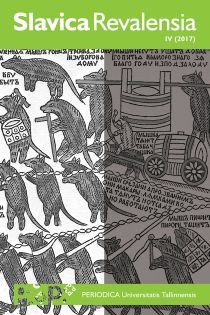Abstract
This article is devoted to one of the most enigmatic details of Pushkin’s Grobovshchik (1831), namely, “a plump Amour with an inverted torch.” The author investigates its variable semantic structures, and a range of narrative potentials determined by such contexts as a) classical allegorical tradition, b) patterns of the anecdote genre, c) elegiac language, and d) some elements of funeral practice.

This work is licensed under a Creative Commons Attribution-ShareAlike 4.0 International License.
Copyright (c) 2017 Slavica Revalensia
